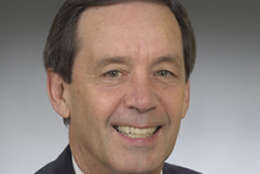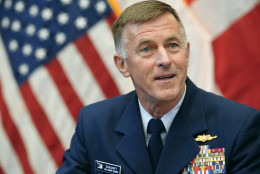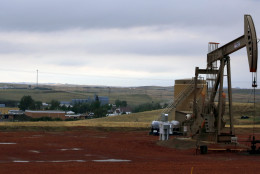Federal Salary Council
-
Federal employees in these four new areas would likely see the locality pay changes on or after Jan. 1, 2019 in their first paychecks of the new year.
July 06, 2018 -
The Trump administration has been pulling at the Gordian knot of federal employment.
April 20, 2018 -
In today's Federal Newscast, after spending 2017 with low budgets, the head of the Coast Guard says his service is now punching at the middleweight class.
April 11, 2018 -
The Federal Salary Council will also review the methodology it currently uses to determine the locality pay program.
April 10, 2018 -
The pay raise process established in the U.S. Code relies on federally-collected data, which should make it easy to predict a year in advance just what kind of a pay raise federal employees will be getting.
January 09, 2018 -
Federal employees looking for major changes to locality pay will be disappointed in 2018, as the entities that typically make small but significant moves on federal salaries were largely inactive during the first year of the Trump administration.
January 04, 2018 -
The President's Pay Agent approved a recommendation to add Burlington, Vermont, and Virginia Beach, Virginia, to the list of separate locality pay areas for 2018. The pay agent signed off on one recommendation from the Federal Salary Council but little else.
December 21, 2016 -
The council also revealed an annual study from the Office of Personnel and Management and Bureau of Labor Statistics, which measures the pay gap between federal employees and private sector workers.
October 28, 2016 -
A Senate version of the FAIR Act, which would give federal employees a 5.3 percent pay raise, is gaining support from unions and area lawmakers.
March 17, 2016 -
The increases go into effect January 2016. The executive order comes one month after the Federal Pay Agent finalized its recommendation that the President give about 102,000 federal employees locality pay raises.
November 30, 2015 -
The Council recommended adding Virginia Beach, Virginia and Burlington, Vermont to the list of 47 separate locality pay areas for 2017. It also suggested changing the criteria for establishing and adding new locality pay areas.
November 06, 2015 -
OPM issued a final rule on behalf of the Federal Salary Council approving 13 new areas. But the updates will not be final until President Barack Obama signs an executive order.
October 27, 2015 -
The 9-year struggle to fill federal jobs in North Dakota's oil-boom towns offers a stark example to the rest of the government of just how hard it can be to keep federal workers when private employers beckon.
October 22, 2015 -
The Federal Salary Council voted to add 13 cities to a list of communities where federal employees are paid more. The council was aiming to close a growing gap between federal employees and private counterparts in certain regions of the country. But the administration has frozen locality pay until at least 2016. Federal News Radio's Emily Kopp joined Tom Temin on the Federal Drive to discuss what the council recommends.
October 20, 2014 -
The Federal Salary Council voted Friday to add 13 cities to a list of municipalities where federal employees are paid more, in an effort to close a growing wage gap between feds and private-sector counterparts in certain regions of the country. 12 of the 13 recommendations had been approved previously but have gone unimplemented by the President's Pay Agent, frustrating federal employees and the unions representing feds in those areas.
October 17, 2014















